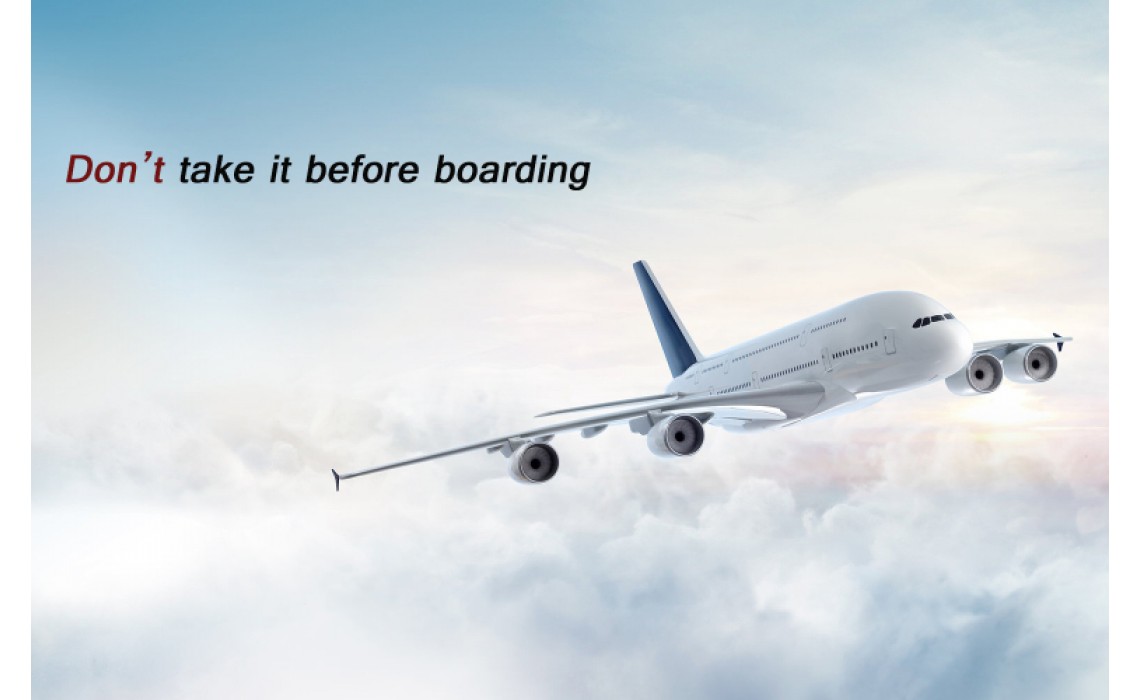
The restriction you should know before boarding
Before you head to the airport, you should take the time to get familiar with common security rules such as what kinds of identification you may need, and basic baggage rules such as what valuable or critical personal items should always be in your carry-on bag and not in your checked luggage.
Going through airport security without any extra delays will be a lot easier if you avoid taking banned or restricted items through the security checkpoint. While the following descriptions of banned or restricted items are based on TSA rules and guidelines, most countries have similar restrictions.

Luggage
Carry-on baggage
The maximum size of carry-on baggage does not exceed 14 inches x 9 inches x 22 inches (35 cm x 22 cm x 56 cm), including handles and rollers.
Personal bag
It is allowed to carry a small piece of personal belongings (such as a shoulder bag, handbag, laptop bag or other small items) that fits under the front seat. The maximum size must not exceed 9 inches x 10 inches x 17 inches (22 cm x 25 cm x 43 cm). If you are in the Basic Economy, you can only bring your personal belongings to board the plane.
Banned items
The following items are completely banned from aircraft, and should not be brought to the airport:
- Explosive and incendiary materials
- Flammable items
- Gasses and pressure containers
- Matches
- Oxidizers and organic peroxides
- Poisons
- Infectious materials
- Corrosives
- Organics
- Radioactive materials
- Magnetic materials
- Marijuana (cannabis)
Note: For more information, including details on other dangerous items, visit the banned items page. Also, if you are in any doubt about whether your item may be hazardous, you should bring it to the attention of either your airline or the security screener.
Related resources
While explosives are banned, passengers can follow specific procedures to carry firearms and some kinds of ammunition in checked baggage.

Items restricted to checked bags
The Transportation Security Administration (TSA) has prohibited the following items from airplane cabins and carry-on baggage but may (with some exceptions) be carried only in checked baggage:
- Stick or club type sporting goods
- Firearms (including firearm replicas and firearm parts) and ammunition
- Knives and cutting instruments
- Paintball guns
- Power tools and larger hand tools
- Dry ice (frozen carbon dioxide)
Note: For more information, including a more detailed list of items that can only be in a checked bag, visit the checked bag only page for additional details.

Don’t put these items in checked luggage
There are many other kinds of items that you should only have in your carry-on bag, or on your person, especially if it is hard to replace, very expensive, or necessary for your health and well being. Examples include:
- Money related items
- Computers and personal electronic devices
- Passports and other identification
- Jewelry, expensive watches, precious metals, and valuables
- Medications and medical devices.
- Difficult to replace items like keys; eyeglasses; mail, documents, and devices with electronic data.
For a more detailed list of items that should never be in a checked bag, visit the Things you should never put in a checked bag page.
Restrictions on liquids, gels, and aerosols
Most countries have restricted what liquids and gels a passenger may have in the passenger cabin or in the secure area of the airport. In the US, containers holding liquid and gel products must have a capacity of no greater than 3.4 fluid ounces (100 ml). Also snow globes and similar liquid-filled decorations, no matter what size, can only be carried in checked luggage.
Exceptions to liquid, gel and aerosol rules
There are a number of exceptions to the restrictions on liquids, gels, and aerosols. Most of those revolve around medical items and food items intended for small children.
- All over-the-counter and prescription medications, including insulin and diabetes medical supplies.
- Items needed for passengers with a disability or medical condition.
- Items used to augment the body for medical or cosmetic reasons such as mastectomy products, prosthetic breasts, bras or shells containing gels, saline solution, or other liquids.
- Food items like baby formula, breast milk, juice or water for a traveling infant small child.
- Duty-free items purchased at the airport.
Visit the Rules and exceptions for liquids for additional advice on liquids, gels, creams, and aerosols.
Flying with cash
There are two things you should consider when flying with cash or other financial instruments, loss of your cash and dealing with legal issues. There are some basic things that you can do minimize these two kinds of risks.
Protecting your cash from loss
- Never put cash or financial instruments in a checked bag.
- Keep your cash out of sight as much as possible
- When passing through security, keep your eyes on the bag with the cash.
Legal issues with cash
- There are no limits, or reporting requirements, when flying with cash on a US domestic flight.
- When traveling to or from the US, you must declare cash or cash equivalents valued at more than $10,000.
- Rules in other countries may be very different, so check before you fly
Visit the How to fly with large amounts of cash page for more detailed information on flying with large amounts of cash or financial instruments, especially when flying to or from the US.
In the last, just checked above carefully before boarding, the procedure of airline will be very smooth, and here wish you have a good trip.
Related products
Production DescriptionDouble Negative Ions: The GLAMFIELDS hair straightening brush seals the hair cuticles and locks in your hair's natural moisture, to eliminate frizz, split ends, and knotting and adds shine, repairing the hair quality of harm, making a smooth, silky, natural lustrous look.Advanced MCH technology: Characterized by Heat Quickly, Save Energy, More Durable, Lasts Longer,it heats up within 30 seconds after boot, wider and denser comb tooth also decreases the time of straightening.16 Heating Modes: 16 heating modes (170℉-450℉) make it suitable for all hair types and volumes, and provide total control for all hair condition and styling needs. It is perfect for a whole family, adults or children, women, and men. You can always find the right settings with the GLAMFIELDS professional straightener.Easy To Use & Travel Friendly: Small Size with 360 rotating handle, which is easy to operate with one hand to reduce the pressure of the wrist, the international dual voltage 110-240V with extra compatible adapter perfect for travel and vacation.SAFETY IS GLAMFIELDS'S TOP PRIORITY- Powered by heat heat-resistant protective plate, heat-resistant glove, anti-burning shell, and 60 min auto-off, GLAMFIELDS guards your safety in every second. Use only on dry brushed;Please Note:If you leave the buttons still (unpressed) for 5 seconds, all buttons of the device are automatically locked; press the power button twice constantly to unlock.The Best Tips for Straighten Your Hair (IMPORTANT):❤ Use only on dry brushed; ❤ Cover less hair in one stroke once for thick and curly hair;❤ Brush Slowly in a pulling motion; ❤ Make Sure your hair gets deep into the inner area of the brush.Specifications: Heater: Metal Ceramic Heater (MCH)Temperature range: 330°F to 450°FWarm-Up Time: 30 secondsAutomatic Shutoff: 30 Minutes360°Rotate Swivel Power Cord: YesVoltage: 120–240V ACFrequency: 50 -60 HZPower: 45W Package Including:1 x Hair Straightening Brush1 x Heat Resistant Glove1 x Cleaning brush1 x Cloth Bag1 x User Manual..
Add to CartGLAMFIELDS Electrical Heated Irons Hair Straightening brush1. GLAMFIELDS Updated Version. Negative Ions for Your Healthy Hair ---The GlAMFIELDS Hair Straightener Brush releases rich negative ions that give your hair a smooth, silky, natural lustrous look by sealing the hair cuticles- reducing frizziness, split ends, and knotting. Most important, our straightening brush will give you natural healthy silky looks rather than flat burnt look, which is easy to manage anytime and anywhere.About the product2. Faster Heating with Advanced MCH Technology --- 30-40 Seconds Heat Quickly, less than one minute. MCH(Metal Ceramic Heater) is new heating standard for hair appliance. Compared with traditional straightener brush, such as PTC heaters, our ceramic straightening brush saves energy, more durable, lasts longer, significantly reduces overall straightening, hair styling time. And with wide and dense brush tooth, it straightens your hair quickly.3. 12 Adjustable Heat Temperatures Levels --- The GLAMFIELDS hair straightening brush offers 12 different temperature setting from 250°F to 450°F, and fulfill all your needs for various hairstyles and conditions, including thin, thick, curly, fine, bleached and wavy. LED screen display shows the temperature function.4. Auto Off & Auto Temperature Lock --- This straight hair brush is equipped with the auto shutdown and temperature lock features to ensure maximum security and optimum performance at all times. Temperature lock ensures that there is no abrupt rise in temperature that can harm the hair. The electric hair brush auto shuts off if it is not used for continuously 30 minutes thereby preventing any energy wastage and prolonging the life of the machine as well.5. Easy to Use & Travel-Friendly--- Small Size with 360 rotating handle, which is easy to operate with one hand to reduce the pressure of the wrist, the international dual voltage 100-240V with extra compatible adapter perfect for travel and vacation. [Warranty: Our GLAMFIELDS supports 3 months Money Back and 1-year guarantee and friendly, easy-to-reach support.]Achieve the Sexy & Mysterious, Beauty You want!GLAMFIELDS Hair Straightener Brush with Faster Heating MCH Ceramic Technology & Double Negative IronsDo you take a long time to manage your hair every day thus wasting your time?Most hair straightening brushes take a long time to heat up. If you get your hair straightened through a flat iron means spending hours in front of the mirror until you get it finally done! Steal away the moisture? Burns accidentally? It maybe can lead to weakened hair, split ends? It is so bad! Our GLAMFIELDS hair straightener brush can help you do your cluttered hair and make a clear look within 10 minutes before going out. Better hair protection!Why Choose US?---Heat up quickly, Preserves natural moisture, Keeps the volume of the hair intact, Better hair protection, Safe for use.---No time wasting, No fatigue at Salon, No burning on your hair, No pain No hurt to your scalp and hands.---The straightening brush releases rich negative ions that give your hair a smooth, silky, natural lustrous look by sealing the hair cuticles- reducing frizziness, split ends, and knotting. With MCH technology, it heats up within only 30-40 seconds thus saving time and energy.---Anion Technology: Straighten Your Hair, Eliminate frizz, Add Shine. Infrared rays lock in your hairs natural moisture and give your hair a smooth, silky, natural lustrous look by sealing the hair cuticles.Specifications:●Negative Ions-Hair Protection●Heater: Metal Ceramic Heater (MCH), 30 seconds heat up quickly●Auto Shut Off & Auto Temperature Lock Function(30 Minutes)●12 Adjustable Temperature Setting for different hairstyles.●Suitable for all kinds of hair condition and hairstyle●Temperature Range: 250°F ~ 450°F / 120℃ -230℃●Anti-Scald Comb Teeth●360°Rotate Swivel Power Cord●International Voltage: 120–240V AC●Frequency: 50 -60 HZ●Power: 68WInnovative technology, Fashionable Design & EfficiencyMCH Technology & Professional Ceramic CombHeat Quickly, Save Energy, More Durable, Lasts Longer, The Advanced MCH technology can heat up within 30~40 seconds,wider and denser comb tooth dramatically also decrease the time of straightening.Universal dual voltage 110-240Vto deliver the same outstanding performance perfect for travel and vacation around the world.Safe & Anti-ScaldDesigned with a circle of non-heated teeth around the hairbrushhead to prevent scalding; each heating tooth has an anti-scald tip so to avoid damaging the scalp or skin when using the brush. Our GLAMFIELDS straight hair brush also comes with an anti-scald glove included for added safety.360 Swivel Power CordThis compact straightening brush comes with a 360 rotating handle that helps you operate with one hand with utmost convenienceTemperature ControlThe Glamfields ceramic straightening brush offers four different temperature levels for you to choose from. You can set the temperature levels on the brush from 170 degree Celsius to 230 degree Celsius to meet your styling needs.The Best Tips for Straighten Your Hair (IMPORTANT):♚ Not waterproof. Don't immerse it in water or clean it under running water. You can use a brush stained with alcohol and clean.As alcohol is highly volatile, it disappears quickly and does not cause damage to the instrument in any manner.♚ There is residual heat after using the device, so it is best to keep it in the open for some time before storing it safely.♚ When the LCD shows "LOC", it means that the buttons are locked, you need to double-hit the power button to unlock.Then you can adjust the temperature or press the power button for 2-3 seconds to switch off.♚ According to the multi-volume and curl of hair, there would be necessary to divide the hair into handful clumps for straightening.Easy to Use, Compact Size, Perfect for TravelingNegative IonsRich negative ions can be eliminating frizz, split ends, knotting and adds shine, repairing the hair quality of harm. Make a more natural smoother and healthier look compare to the flat burnt one...
Add to Cart【COMPATIBLE WITH ALL QI-ENABLED DEVICES】 -- OPERNEE 5W slim wireless charging compatible with all QI- enable devices like Phone X, iPhone 8/ 8 Plus, Samsung Galaxy Note5/Galaxy S6/Galaxy S6 edge/Galaxy S6 edge+/Galaxy S6 active/S7/S8 and so on. Simply plug in power into our Micro USB cable and placed your phone on top of the pad, no cable or USB interface required!!【SAFETY & WON'T DAMAGE YOUR PHONE 】 -- Our wireless charging pad is composed of A11 copper standard coil super-flux ferrite, and MOS field effect device. This standard wireless charging is built with over-voltage protection, overheating protection, over-current protection and short-circuit prevention features, which effectively protects your device and the wireless phone charger itself.【DETACHABLE WASHABLE TPU CASE】 -- The portable wireless chargers is built with TPU material and meets IP54 Standard. The soft shell will perfectly protect your wireless charger from scratch-resistant, waterproof, dust-proof, easy to clean, anti-slip, anti-drop, and anti-shock.【IMPORTANT NOTICE】 -- Please note that any iron, metal, coins, IC Cards, bank cards, magnetic absorbers and other metal objects in the charging detective area may influence the charging speed. For a better-charging result, we recommend that you to remove the phone cover, or phone case should be less than 4MM thickness.【60 DAYS MONEY BACK AND ONE-YEAR REPLACEMENT WARRANTY】-- The wireless charger station is approved by FCC, RoHS, and CE. We offer 60 days money back guarantee and 12 months warranty for the replacement. If you have any issues with one of our wireless charging, please contact us and we will make it right within 24 hours.Features:✔ This is a wireless charger with designer soul!✔ This wireless charger will help you power saving!✔ This is wireless charger help you get rid of different phone cords!✔ This wireless charger won't damage charge your phone when you charging✔ IP54 waterproof skid resistant,scratch-resistant, dustproof, anti-slip, anti-drop and anti-shock.✔ Temperature, power monitor for safety to protect your phone and wireless charging.✔ LED indicator light to let you know about the status of your charging!✔ Say goodbye to cables or USB interface require,you will not be troubled by different phone cords anymore!Specification:Input:DC 5V/1AOutput: 10WMaterial: TPE+PC+Stainless steelSize:9CM*9CMPackage list:1*10W Wireless Charging, 1*TUP case, 1*USB Cable, 1*InstructionsNOTE:★ Using your device while charging or misaligning the device and charger may cause higher temperatures.★ Remove protective cases to ensure effective charging. Patented TPU CaseOPERNEE wireless charger is built with Patented TPU material and meets IP54 Standard, perfectly protect your wireless charger from scratch-resistant, waterproof, dust-proof, easy to clean, anti-slip.You can take it down and clean it if gets dirty.Stay CoolingCooling Faster, Charging Efficiently!!!Adopt stainless steel heat sink, and thermal conductive silicon rubber pad speed up cooling for optimal charging.Foreign Object IdentificationSupport FOD foreign object detection function when metal foreign object is detected. The bubble will automatically power off to avoid power loss and security risks...
Add to Cart【BEST DECORATIVE LIGHT 】 Fashion and modern design, It is great for adding ambiance to the pillar, corridor, front door, entrance, deck, porch or anywhere around your outdoor and home décor.A good choice for your family.【EASY TO INSTALL】 This solar light installs easily in seconds; Screws and a hinge are provided and no complicated wiring is necessary. you need to place the light where you want it. User manual makes installation and set up simple!【HIGH QUALITY SOLAR FENCE LIGHT】There are 10 LEDs and high-quality ABS material, solar porch light allows you to use solar energy to power this bright sensor light. It’s a great way to illuminate areas of your home while saving electricity!【WEATHER RESISTANCE】Waterproof and heatproof, suits for all kind of weather, solar powered lights absorbs and converts sunlight into electricity and stores in the daytime and turn on automatically in darkness or at night, Light up 8-10 hours after fully charged.【WARRANTY POLICY】 We attach high attention to every customer's experience, we provide 100% Money back or replacement warranty if there is any quality issue or any reason that caused you to dissatisfy with this item.Energy-saved Solar LightsPowered by free solar energy and no electricity required.Charging these outdoor solar lights under direct sunlight in daytime (only 6-8hours), Auto turn on at dusk and shut off at dawnWireless Solar Wall LightsSuitable for pillar, corridor, front door, entrance, deck, porch or anywhere around your outdoor and home décor.A good choice for your family.Installation Step1. Use key pin to turn on switch on the back of lamp2. Choose the suitable location and ensure solar panel will fully charge at daytime3. Use a power drill (not included) to create 2 holes, gently hammer the 2 expansion pillar-hinge into the holes and tighten screws securely4. Hang the solar decorative light on the screws.OPERNEE Solar Lights Outdoor, (2 pack) Wireless 10 Led Solar Fence Lights Waterproof Auto ON/OFF Wall Decorative lights for Porch, Patio, Deck, Yard, GardenFeaturesUnique shape design, amazing decorative light for your familySolar powered, environment and saving electricityEquipped with rechargeable battery, free of powerAuto turn on at dusk and shut off at dawnAuto charge the battery by sunlight during daytimeSpecificationNi-MH Battery:1.2V, 1200mAhLED Quantity:10 pcsInstallation Height:1.2--1.5 meters (3.9--4.9 ft)Switch:ON/OFFMaterial:ABS plasticWorking Temperature:-10℃~+50℃Package Content2 x Solar Lights2 x Installing Screws2 x Expansion Pillar-hinge2 x Key Pin1 x Use Manual..
Sold out【Extended Size & Easy to Use】: A larger size, plus a comfortable non-slip grip, allows for effortless and easy usage. The curved blade's edge creates the best fit along with the shape of nails, you can precisely trim your fingernails and toenails.【Razor-Sharp Blades】: Through repeated sharpening and polishing procedures, the blade edges of the nail clipper are perfectly aligned against each other, with no gaps in between. Nails are sleek and smooth after clipping, with no more tearing or jagged nails, thanks to the remarkably sharp blades.【Anti Splash Nail Clipper】: Fingernail clipper with catcher which features a storage box design to prevent nails from splashing everywhere in process of nails clipping for easily clean them up and keeping your room neatly.【Sharp & Precise Curved Blades】: Sharp stainless steel blades allow you cut with little effort to cut thick toenails and will not tear or split nails, With the precise curved nail clipper blades edge makes more easily trimming nails smoothly and well-groomed for your fingernails or toenails. Easily and perfect clipping in every time!【Perfect After-Sales Service】: If GLAMFIELDS nail clipper has any defects or if you are not satisfied with it, we will refund or ship you a brand new nail clipper...
Add to CartThis GLAMFIELDS International Travel Adapter has US / EU / UK / AUS plugs, and designs with wide voltage: 100V-250V AC. Max Power: 2000W (250V/8A), is suitable for more than 200 countries. Can connect with a plug, laptop, low-power hair dryer, and electronic devices.Rated power: 100V~/800W, 250V~/1500W. Power output: 100-250VAC~50-60HZ 8A Max. This Charger Adapter Plug Converts the Power Outlet Only, it Does Not Convert Electrical Output Current and Voltage.Please note: This product is not suitable for some high-performance devices, please check the power before use.The universal power adapter built-in the latest self-resetting fuse. When over-current or over-voltage, the fuse will be disconnected at a high current and reset automatically after the power returns to normal. No need to change the fuse.Smart fast charging: 2 USB-A Ports(2.4A), 2 USB-C Ports(3A), and 1 AC Socket to charge 5 devices simultaneously with high speed. Ideal for iPhone, iPad, Samsung Tab, iPod, Smartphones, 5V Tablets, Bluetooth Speakers & Headset, etc.This All-in-one Travel Adapter Accepts Plugs from more than 200 countries with US/EU/AU/UK plugs like Thailand, New Zealand, Israel, Italy, France, Spain, Canada, China, Australia, Hong Kong, Argentina, Peru, Japan, etcThe adapter is CE / ROHS / FCC certified, with built-in Safety Shutters, LED Power Indicator. It Only applies to the use of small power electric appliances when traveling, such as mobile phones, digital products, and computers with low power, NOT work for high-power appliances such as flat iron, hair curler, hairdryer, steam iron, hot water heater, coffee maker, etc.Built-in Auto-Resetting FuseHow the fuse works:When there is a short circuit or overload, the heat increases from the high current flowing through the fuse. If the temperature is too high, the fuse wire will fuse. And the current will be cut off. When the disturbance is released, the self-recovering fuse wire cools again and it is reconnected and a new return path is established.Smart Chip for Intelligent DistributionThis USB power adapter has a built-in IC chip, which can automatically identify the current and voltage, and choose the appropriate charging mode accordingly. Provides protection for the devices.The built-in safety shutters protect the user from direct contact with live parts at the socket. By moving the selector switch only one plug can be used, the other plugs are automatically locked.Specification:Input voltage: 100V-250VMaximum carrier current: 8ARated power: 100V-800W / 250V-2000W2 USB-A & 2 USB-C output: 5V / 5000mA (common)Suitable for two-hole plug-in devicesNo voltage conversionPrecautions:This product does not have a voltage conversion function (AC-AC). Please make sure that the power of the outlet you are using has the correct voltage to prevent possible damage to your device or other security risks...
Add to Cart

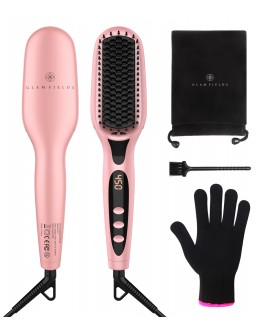
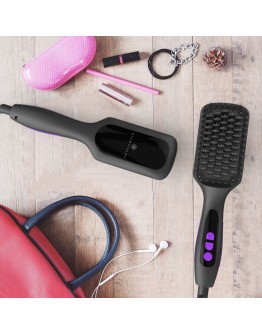
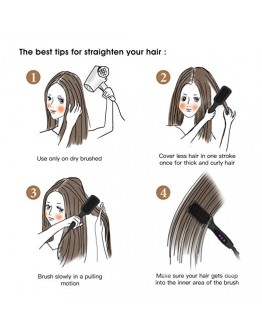
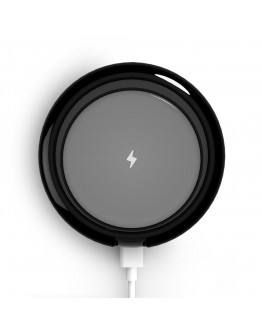

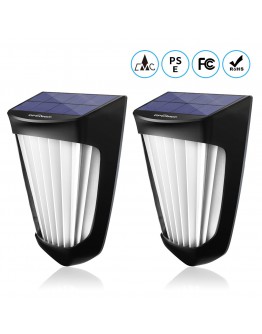

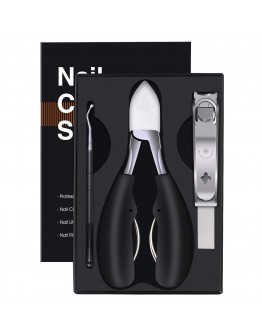
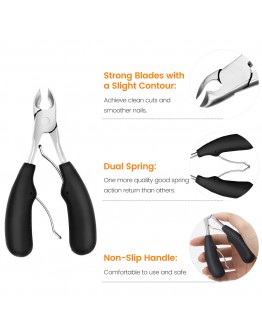
-262x334.jpg)
-262x334.jpg)





-60x76.jpg)
-60x76.jpg)

















